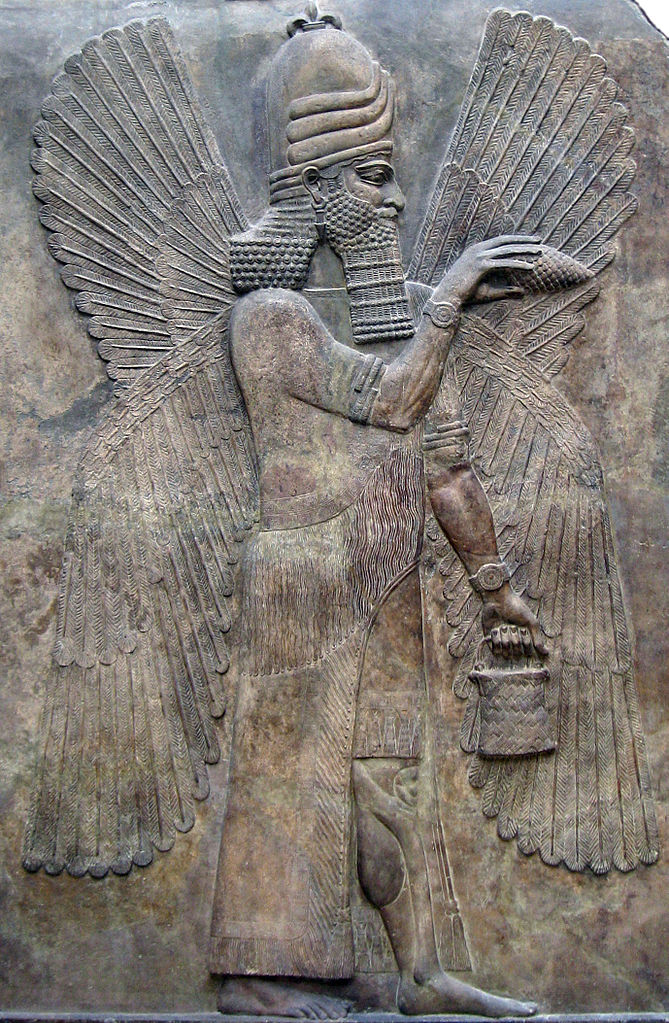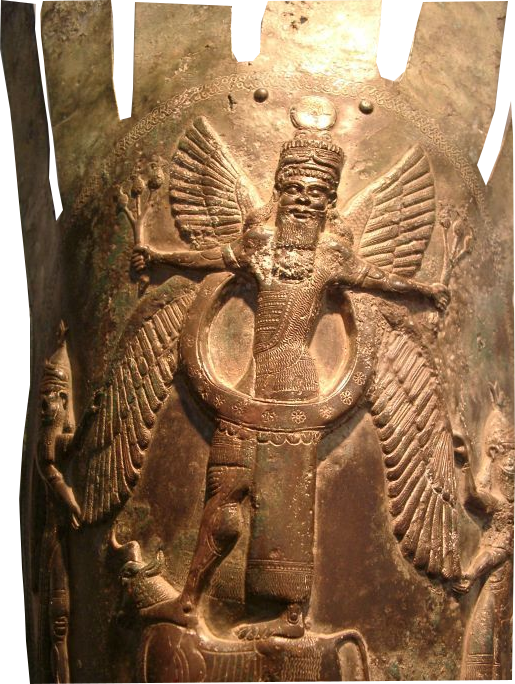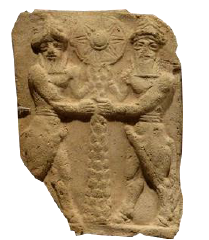Ancient Psychedelia: Alien Gods & Mushroom Goddesses
Online Book - Chapter 8, Page 114
Back to Online Book Mainpage / Next Page (Chapter 8, Page 115)
| The “Word of God,” and “God’s Law” both have roots in the idea that the universe is spoken into being. One of Marduk’s great challenges was to create “by word alone” (63) and in Egyptian mythology, the creator god Ptah pronounced “the name of all things.” (64) Most likely, the source for this concept is the force with which the mushroom causes the enchanted to “sing” forth praises and poetry. It is said that shamans hear the mushroom people singing and attempt to repeat their songs. When learning earlier about the Rig Veda, the poetry and the formation of language itself, we find some interesting tidbits in the accounts collected by Wasson, with which we can compare these earlier Vedic hymns to. In a book titled The Religion of the Ugrian Folk from 1927, Karjalainen [case 26] writes: “The man who is intoxicated from eating fly-agarics sees the panx ‘dancing’ before his eyes, invisible to others; that is to say, they move in the direction of the sun and sing a song, which the intoxicated Ostyak repeats after them word for word, so that the panx act as ‘singing-leaders,’ for the prophesying magician. At the same time the panx tell the magician what he wants to know. “Drum, zither, and panx are the ‘great’ material means by which the Ugrian magician attempts to communicate with the spirits and obtain the information he needs. There are also many other means, both material and mental, used for uncovering mysteries. One such means which is found everywhere and is certainly very ancient is the dream-vision, possibly the natural forerunner of artificially stimulated ecstasy; another is soothsaying based on dreams, and this is what soothsaying with the aid of the panx essentially amounts to.” (65) Likewise, the Campa shaman from South America who ritually use ayahuasca, sees and sings along with the spirits who are singing and dancing there with him. (66) The Akitu Festival at Babylon was held when Babylon became the capital and Marduk replaced Tammuz as the central male deity. The annual ceremony was held in spring during the first eleven days of the month of Nisan, and the king played the leading role. A scene was played out with purificatory rites and a reciting of the Enuma Elish, the Babylonian story of Creation, and ending with the king’s abdication and reinstallation on the throne in the shrine of Marduk. (67) Just like Marduk and his battle with Tiamat, Baal’s heroic conquest of the dragon Yam or Nahar gives him prestige and he is installed in the royal palace of the heavens. Baal and Marduk are the same persona. (68) The Mushussu were sacred animals to Marduk, and were portrayed on the reconstructed Ishtar gate in the city of Babylon circa 6th century BC. They are a mix of a dragon or serpent, an eagle, a feline, and they have long necks, horned heads, a snake tongue and a crest. From the way they are depicted on the Ishtar seals, they very closely resemble the dragon on the royal crest of Scotland and England. This beast is also called Sir-Rush. |
We have seen previously, how the Apkallu and Oannes are both pictured taking the pinecone from the Tree of Life. Take notice that Marduk is also taking a pinecone from the Tree of Life (21c), and he has two sets of wings, just as the Apkallu, giving us reason to believe Marduk may be one of the Apkallu or “Seven Sages.” In a Babylonian seal depiction, Marduk is flanked by two pillars stems with round orb caps on top, while clutching serpents with his hands (24h). This pillar is similar to the depiction with two bull-men on each side from Isin-Larsa / Old Babylonian period, c. 2000-1700 BC (15c). Bil or Enu is another of the three of the Babylonian pantheon but probably just another name for Marduk as Bel. Nimrod is thought to have built Babylon and the city of Babylon in Assyrian times was called the city of “Bil-Nipru” or Bel-Nimrod. Nipur was the capital of Babylon and the goddess there was called “the Queen of Nipur.” (69)   R: (21f) Marduk c. 860 BC-590 BC  (15c) Bull-Men from Isin-Larsa / Old Babylonian period, 2000-1700 BC (63) The Serpent and the Goddess; Cf. The Babylonian Genesis, ed. Heidel, p. 37 (64) ibid, p. 16; J.H. Breasted, The Dawn of Conscience (New York, Scribner, 1933), pp. 34-35. Cited in Amaury de Reincourt, Sex and Power in History (New York: Delta, 1974), p. 39 (65) Soma, Wasson, p. 282; (66) Hallucinogens and Shamanism, Edited by Michael Harner ,Oxford University Press, 1973, p. 44 (Weiss) (67) Cult of the Mother Goddess, p. 51-52 (68) ibid, p. 71; Gaster, Thespis, New York, 1950, pp. 57ff; Driver, Canaanite Myths and Legends, Edinburgh, 1956, pp. IIff.; Syria, vol. xiii, 1932, pp. 113ff (69) Ancient Symbol Worship; History of the Ancient Chaldea, Henry Rawlinson |
Go Back to Page 113